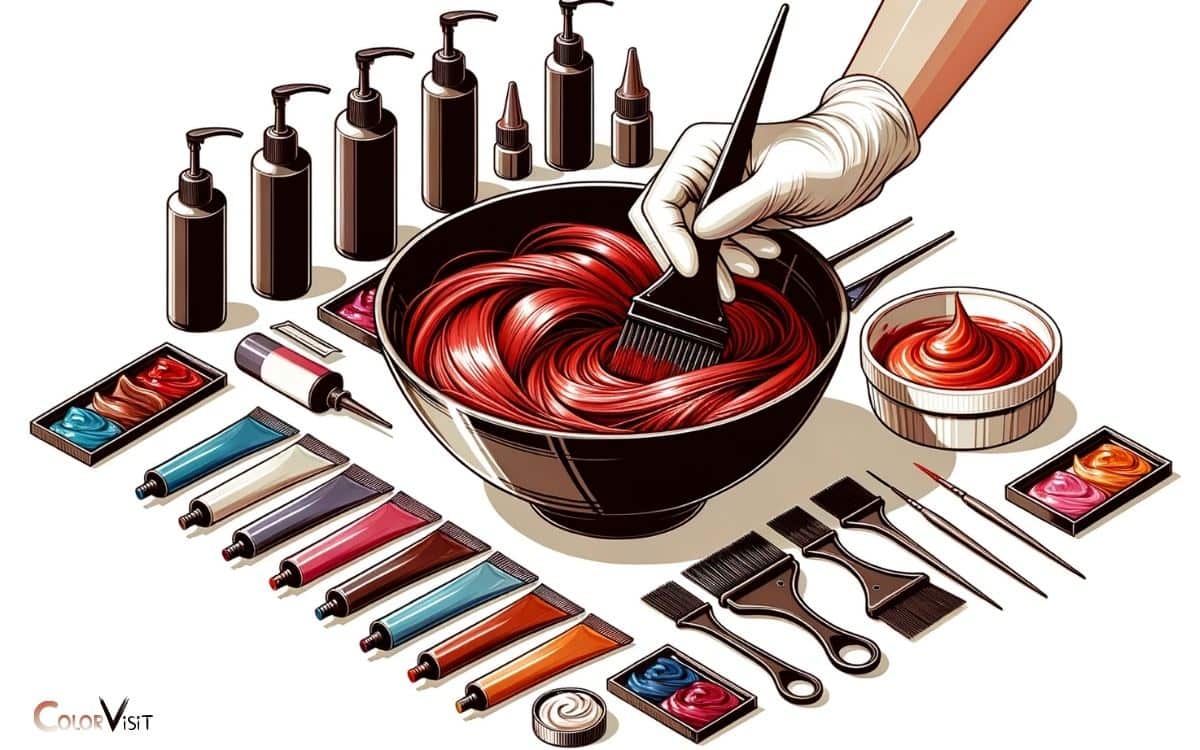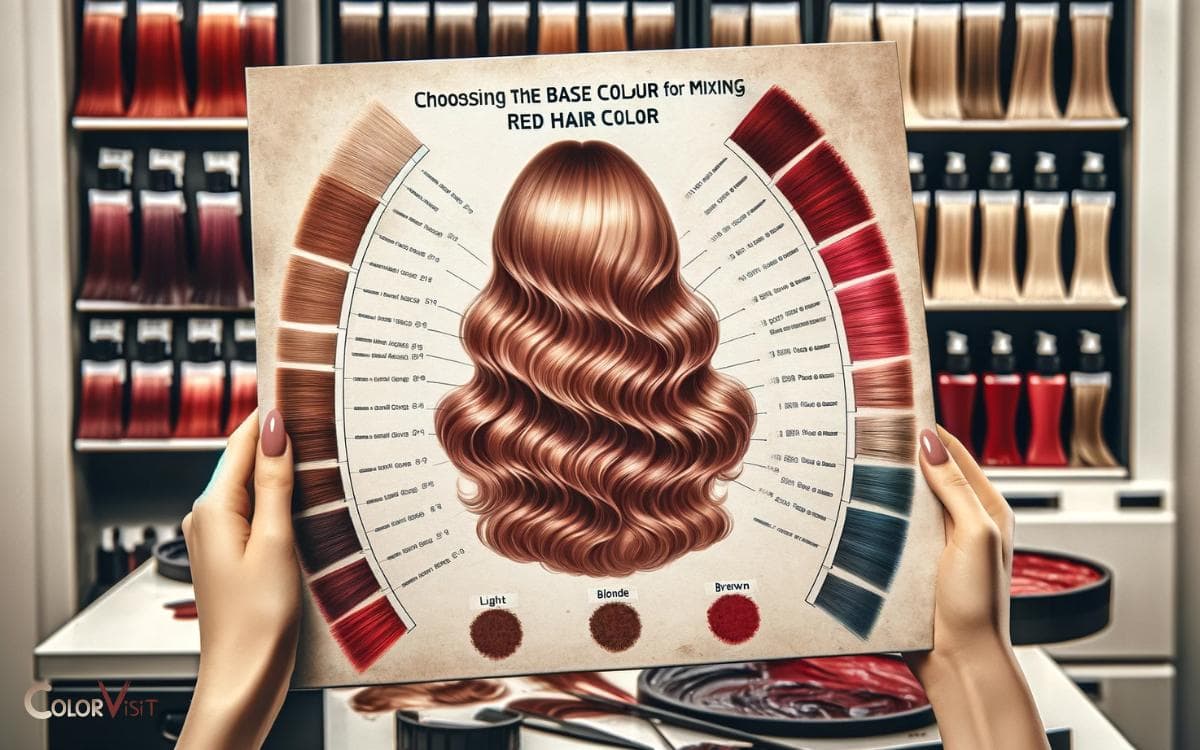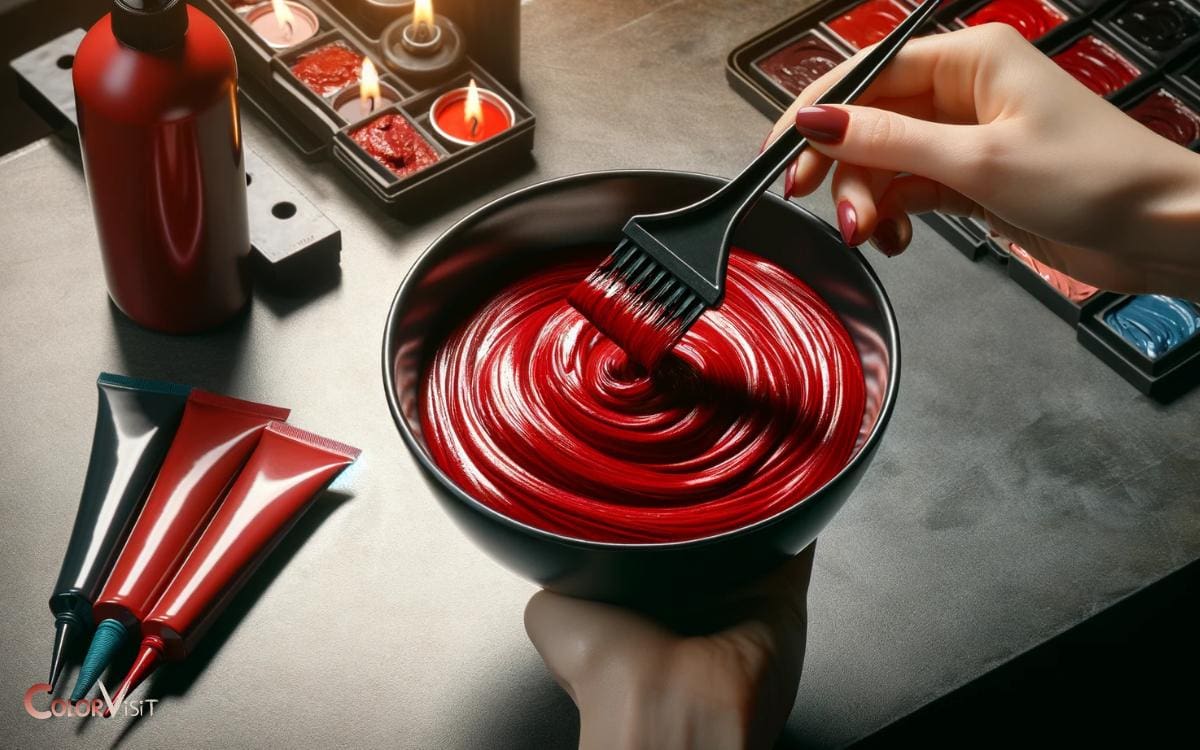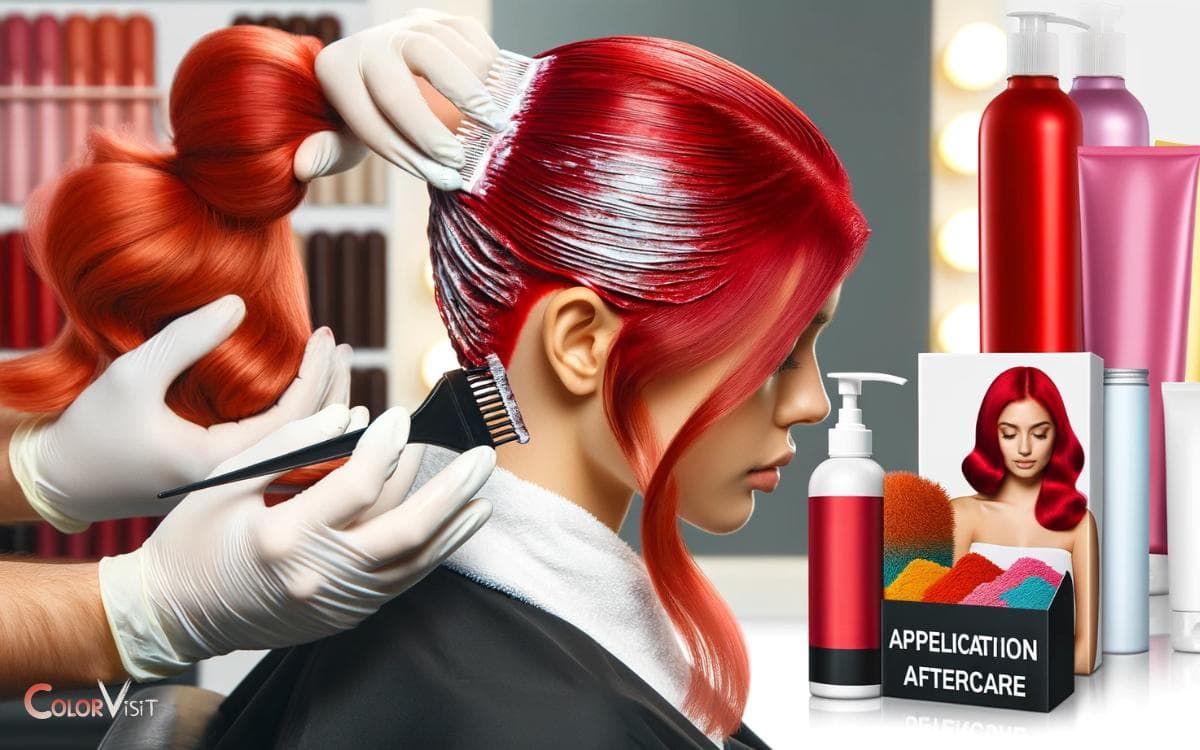How to Mix Red Hair Color? 4 Steps!
To mix red hair color effectively, begin by determining your desired shade of red and understanding the undertones that will complement your natural hair color and skin tone.
When mixing red hair color, consider these process:
Achieving the perfect red hair color can be a bold fashion statement. With the right technique and a keen eye for detail, anyone can transform their look with a rich, radiant red that turns heads.
Key Takeaway
Step 1: Understanding Red Hair Color Tones
Understanding the various red hair color tones is essential for achieving the desired shade when mixing hair color.
- Red hair color tones can range from warm to cool, with variations like copper, auburn, or cherry red.
- Warm tones tend to have hints of orange or gold, while cool tones lean towards blue or violet undertones.
- It’s crucial to consider the client’s skin tone and natural hair color when selecting the appropriate red hair color tone.
- For instance, a client with a fair complexion may suit a cool, violet-based red, while a client with a warmer skin tone may benefit from a copper or golden red.
Step 2: Choosing the Base Color for Mixing
When choosing the base color for mixing red hair color, it is essential to consider the client’s desired outcome and the natural undertones of their hair.
- Understanding the client’s vision for their hair color is crucial as it allows the colorist to determine the depth and intensity of the red hue.
- Additionally, analyzing the client’s natural hair undertones is vital in selecting the right base color to achieve the desired red shade.
- For instance, if the client has warm undertones, opting for a copper or auburn base color may complement their natural hair color, resulting in a harmonious red tone.
- Conversely, for clients with cooler undertones, a base color with hints of violet or blue can help create a vibrant and striking red hue.
Step 3: Selecting the Right Developer Volume
To achieve the desired red hair color after selecting the base color, it is crucial to determine the appropriate developer volume for the hair coloring process.
The developer volume refers to the concentration of hydrogen peroxide in the hair color mixture. Selecting the right developer volume is essential as it affects the intensity and depth of the red hue.
Here’s a table to help you understand the relationship between developer volume and hair color result:
| Developer Volume | Effect on Hair Color |
|---|---|
| 10 Volume | Deposits color but doesn’t lift |
| 20 Volume | Lifts 1-2 levels and deposits color |
| 30 Volume | Lifts 2-3 levels and deposits color |
Step 4: Adding Red Hair Color Pigment
Adding red hair color pigment requires carefully measuring the desired amount of pigment and incorporating it into the hair color mixture.
Here’s how to add red hair color pigment effectively:
- Measure Precisely: Use a digital scale to measure the exact amount of red hair color pigment needed for the desired shade.
- Mix Thoroughly: Once measured, add the pigment to the hair color mixture and stir thoroughly to ensure even distribution.
- Adjust for Intensity: If a more intense red shade is desired, gradually add small amounts of additional pigment while constantly checking the color until the desired hue is achieved.
After incorporating the red hair color pigment, the next step is to mix and test the color to ensure it meets the desired shade.
Application and Aftercare
Once the mixed red hair color is prepared, the application process should be executed with precision and care to achieve the desired result.
Here are some essential steps to follow for application and aftercare:
- Sectioning: Divide the hair into manageable sections to ensure even coverage of the color throughout the head.
- Application Technique: Use a tint brush to apply the color, starting from the roots and working towards the ends, ensuring all strands are thoroughly saturated.
- Aftercare: Rinse the hair with cool water to seal the cuticle and preserve the color. Follow up with a color-safe shampoo and conditioner to maintain vibrancy and prevent fading.
Conclusion
Mixing red hair color requires a thorough understanding of color tones, the selection of the appropriate base color and developer volume, and the addition of red hair color pigment.
It is essential to carefully mix and test the color before application, and to follow proper aftercare for vibrant and long-lasting results.
Just like painting a picture, achieving the perfect red hair color is a delicate art that requires attention to detail and precision.





